Site Report #1: The Deep Read
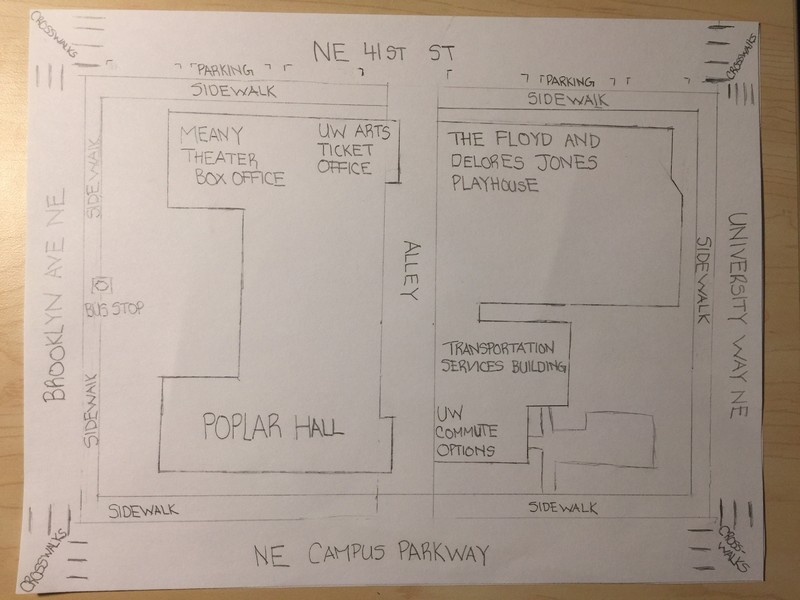
Hand Drawn Map of Block 28 (between Brooklyn Ave. NE and University Way NE, and NE 41st St. and NE Campus Pkwy.) in the University District (Seattle, WA). Based off of Google Maps. Drawn on 18 January, 2017 by Emily Placzek.
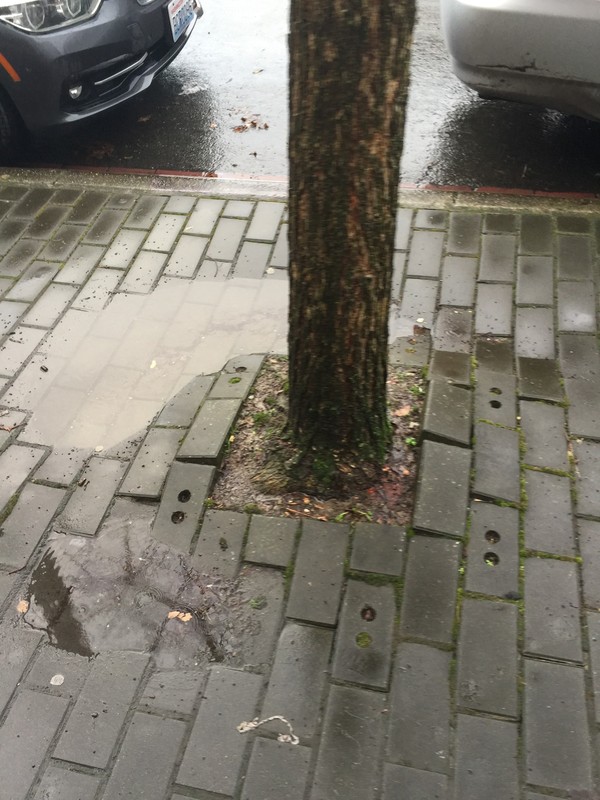
A view of the uneven bricks along NE 41st St. in the University District (Seattle, WA). Taken on 18 January 2017 by Emily Placzek
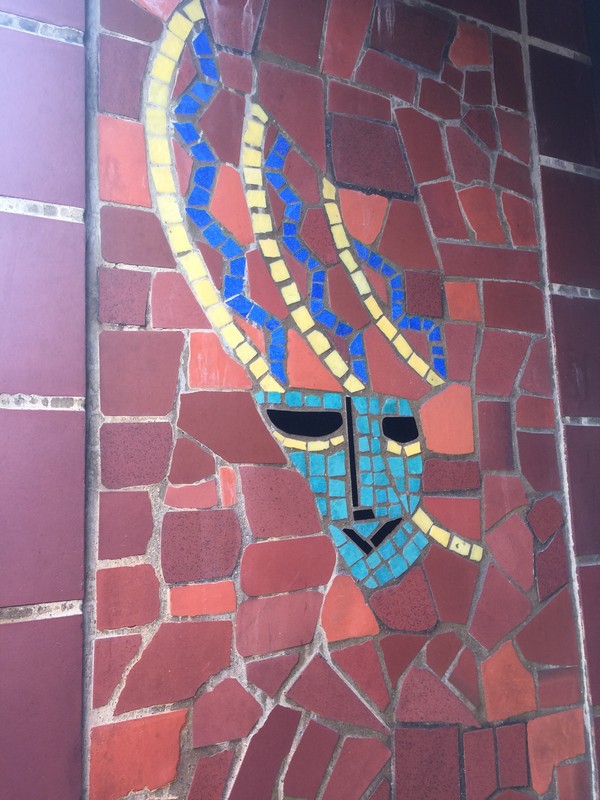
A picture of some tile artwork found by the entrance of The Floyd and Delores Jones Playhouse on 41st St in the University District (Seattle, WA). Taken on 18 January, 2017 by Emily Placzek.
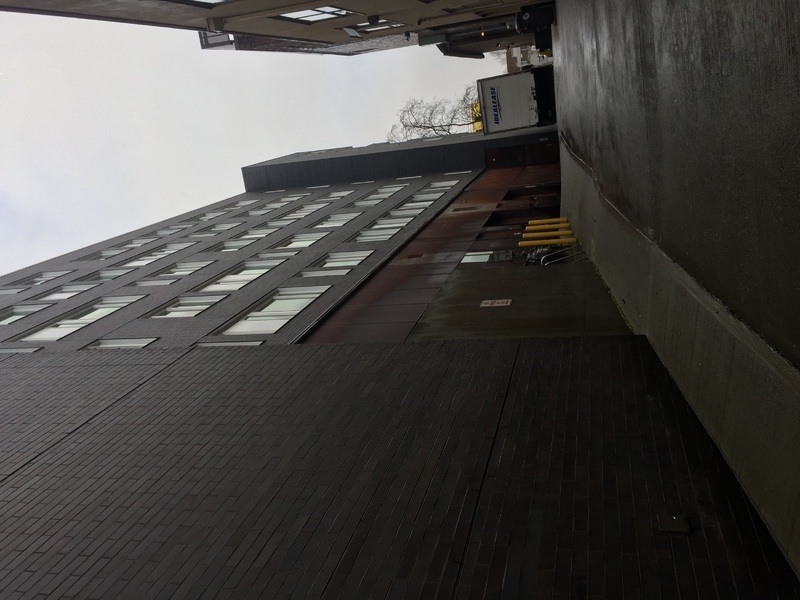
A view of the alley between Poplar Hall and the Transportation Services Building in the University District (Seattle, WA). Taken on 18 January, 2017 by Emily Placzek.
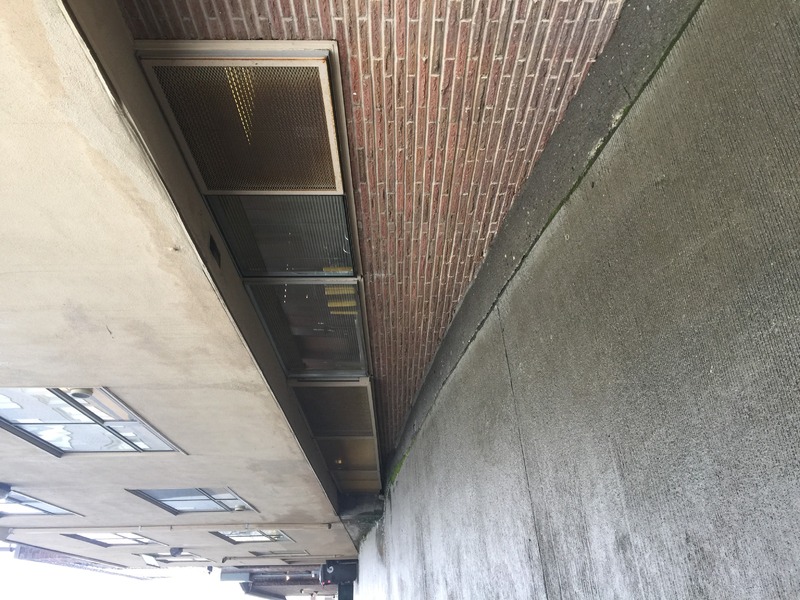
Another view of the alley between Poplar Hall and the Transportation Services Building in the University District (Seattle, WA). Taken on 18 January, 2017 by Emily Placzek.
Introduction
Cities around the world are growing vertical and horizontal. They grow to fit the molds of the current trends and technologies. Before cars, cities were oriented about the pedestrian. Then cars come along and city planners focus on making the city suitable for cars. Now, we are seeing a trend back towards making cities about the pedestrian, but also about mass transit. This growth allows for great additions of technology and money to come into the city; however, this in turn, creates more of a divide between the rich and poor. Political and economic factors further drive this separation, casing the city to be either unattainable or undesirable by the other class. These changing trends, therefore, have a great impact of the suburbs and neighborhoods of cities.
Global cities such as Tokyo, London, and Beijing are/have faced the same successes and struggles that the University District and Seattle are going through now. In order to have political pull, global status, and a successful city in gerneral, it seems that cities must keep expanding to meet the population and business demands. But with only so much land, cities are now beginning to overtake the suburbs, and bringing their agendas with them. Suburbs and cities are evolving and in this project, I will be looking at the University District and learn about its history, present and planned future to better understand more about why changes are occurring, why some pieces stay the same, and what does all of this mean in the end?
For this project, I have been assigned Block #28 which is encompassed by Brooklyn Ave. NE, University Way NE, NE 41st St., and NE Campus Parkway in Seattle, WA.
Site Report #1:
The area between Brooklyn Ave. NE, University Way NE, NE 41st St., and NE Campus Parkway is an easily overlooked area. For many in the area, it is just another section of the residential communities and facilities on the University of Washington’s campus, which, to some extent, is true. On this block stands the Transportation Services Building, The Floyd and Delores Jones Playhouse, an alley, the UW Arts Ticket Office, Meany Theater Box Office, and the brand new Poplar Hall.
The Meany Theater Box Office, UW Arts Ticket Office, and Poplar Hall all seem to be in one big, connected structure and very modern at that. There is a focus of metal and glass work on this building compared to the other side of the alley. The building along NE Campus Parkway and Brooklyn Ave. NE stand much taller and have much more of a presence than that of the other side.
The opposing side of the alley, where the Playhouse and Transportation can be located, is much more dated; however, it can be noted that the Transportation side of the block seems to be much more well kept and likely more recently established compared to the brick buildings behind it. By the entrance to the Playhouse, there were a few pieces of tile artwork which reminded me more of a Spanish component to the walls due to the choice in tile and colors. I also noted that this backside of the block, closest to the corner or NE 41st St. and University Way NE, was the lack of windows or a sense of completeness. What I mean by a sense of completeness is the fact that the foundations of these sections seemed much more noticeable, uneven, and deteriorating. The sidewalk along NE 41st St. is growing dangerously uneven and broken as well. This area does not appear to be as well “polished” or kept up compared to across this block.
This discrepancy in styles and upkeep make me wonder what was there before Poplar Hall and the Art Offices? Did it fit in more with the Playhouse? This then makes me think of what was here before the Playhouse? Was this where some of the entertainment of the past community was found? And again, off of this idea, what is planned for the future of the Playhouse? Will it be modernized or removed completely?
I noted that I could not find any signs that suggested what might have stood here before or why this buildings formerly had any significance. After completeting more research on this block, I have discovered that the Playhouse has been a part of the University District for many decades. The building was originally a tile factory, perhaps why there is tilework by the doors as a reflection on the history of this building. It was coverted into the Playhouse as part of the New Deal in and later sold to the University of Washington on 1950. This specific building could have an entire page dedicated to its rich history but one main point about this history of this building as the Playhouse that stands out is that is has had a focus on multi-ethnic backgrounds since its beginnings (Tate, Cassandra. "HistoryLink.org."). This inclusion of diversity speaks to the theme of the University District of being a place filled with diveresity and culture.
